As an Amazon Associate I earn from qualifying purchases.
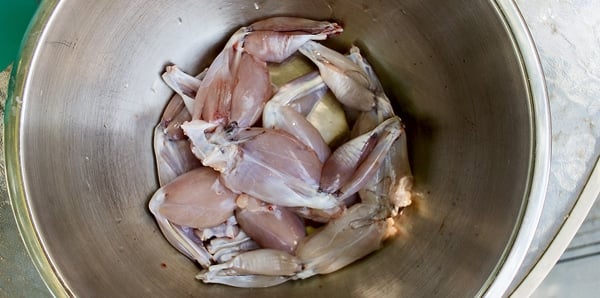
OK, I admit it: This is not the most common skill you will ever need. I mean, how many Americans even eat frog, let alone catch their own — especially outside of the Deep South?
But you should eat more bullfrogs, especially if you live in the West, as I do. Bullfrogs, native to the Southeast, are aggressive, nasty invaders elsewhere. Here in California they are a scourge.
So to do our civic duty Holly, my friend Joel and his wife Mandy headed out to the ponds and marshes around Lake Tahoe. You heard right: Tahoe. At 6,600 feet. This was some high-altitude frog giggin’. You can read more on that, and get my recipe for fried frog’s legs here.
Suffice to say we came home with 14 big bullfrogs. I’d cleaned a frog exactly once before, when I was working in a restaurant in Madison, Wisconsin. I remember it being slimy, but not hard. I was correct.
Most of the meat on a bullfrog is the hind legs — you can eat other parts, but most people don’t. And you don’t want to eat the skin, which is a) loose, b) very slippery and c) really, really strong. So you need to skin and dismember your amphibians.
First, make sure your frogs are actually dead. Being amphibians, they are insanely tough. They will rarely be fully dead when you spear them. They will only be mostly dead. And yes, this is a lot like that scene in The Princess Bride. Whacking them against something hard, like a rock or concrete or the side of your truck, works pretty well. So does stomping them. Sorry, but it’s a tough thing to kill a bullfrog. They don’t die easy.
Once they are all dead, some people drive a nail through a board to impale the frog’s head; this is said to steady the frog while you skin it. I find this step unnecessary. All you need is a cutting board, and a willingness to grab a dead, slimy frog.
You’ll also want kitchen shears, a small, sharp knife, a set of pliers, water to wash the legs, a bowl for the legs and a trashcan nearby.
Start by snipping off the feet. Some people keep the feet on, but I don’t.
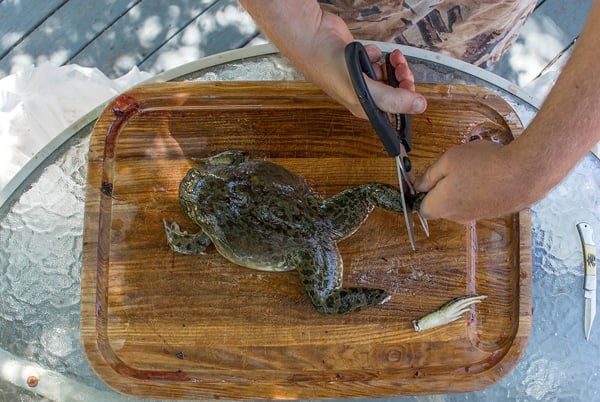
Now on to the only hard part in the whole process: Slicing the skin around the frog’s “waist.” This isn’t really that hard, but the skin is very loose and very tough. I use either the kitchen shears or a knife, depending on my mood.
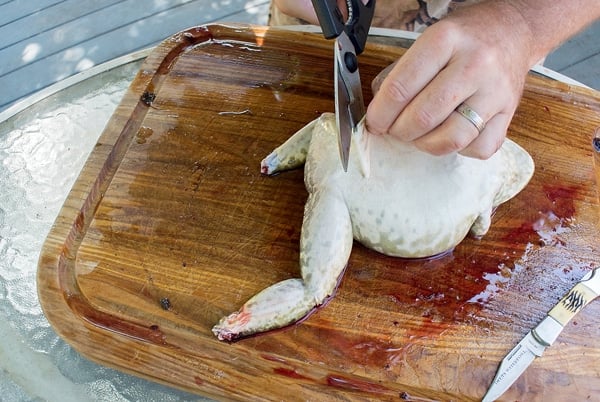
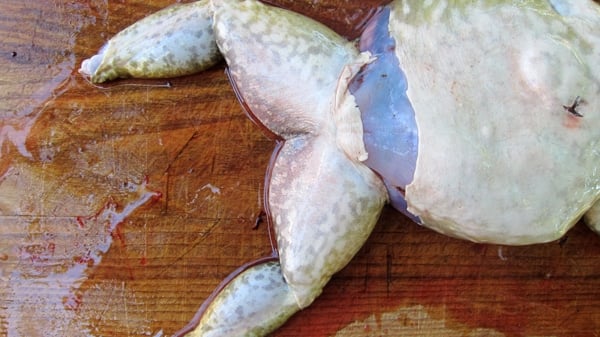
Once you have the skin cut all the way around the frog, the rest is easy. Just take the pliers and grab the loose skin on the frog’s back. Anchor the frog with one hand and yank the skin off with the other. It’s like pulling the frog’s pants down. Ew. I know…
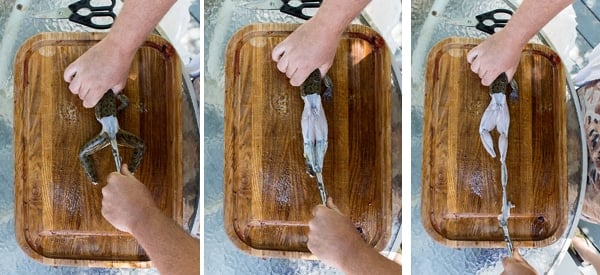
Almost done. Now use the shears to chop the legs off (as a pair) right at the waist.
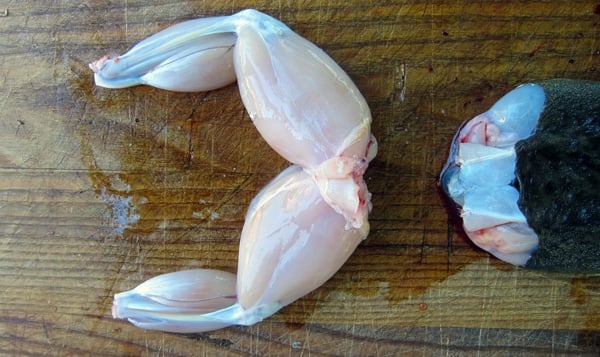
Chop again to separate the legs. I also trim any organ-y looking bits around the middle of the legs. There you have it! Easy-peasy. Once you get the hang of cleaning frogs, you can do one in a minute or so.
When you’re all done, separate the legs into 1 pound bags or so, seal and keep in the fridge for up to 5 days, or freeze for up to a year.

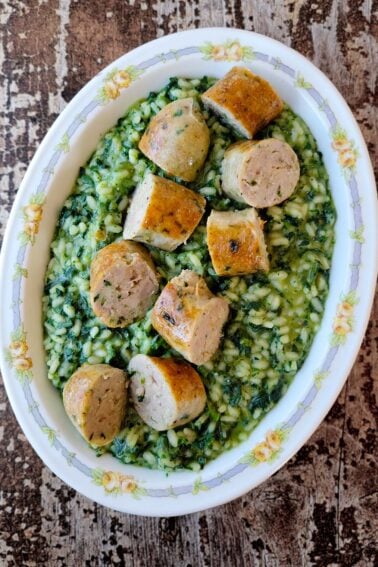
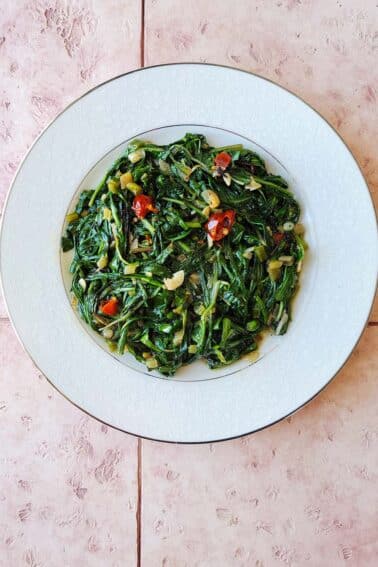
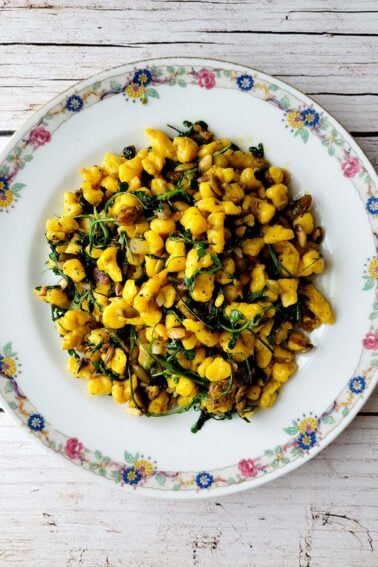
We always put them into a salty brine instead of the buttermilk. We don’t always have buttermilk around the house, but we have salt. But be aware, if they are fresh, the legs will start moving secondary to the salt irritating the nerve endings. Obviously not alive as they are detached, but don’t wish a newbie to be scared or think something is wrong. It is normal.